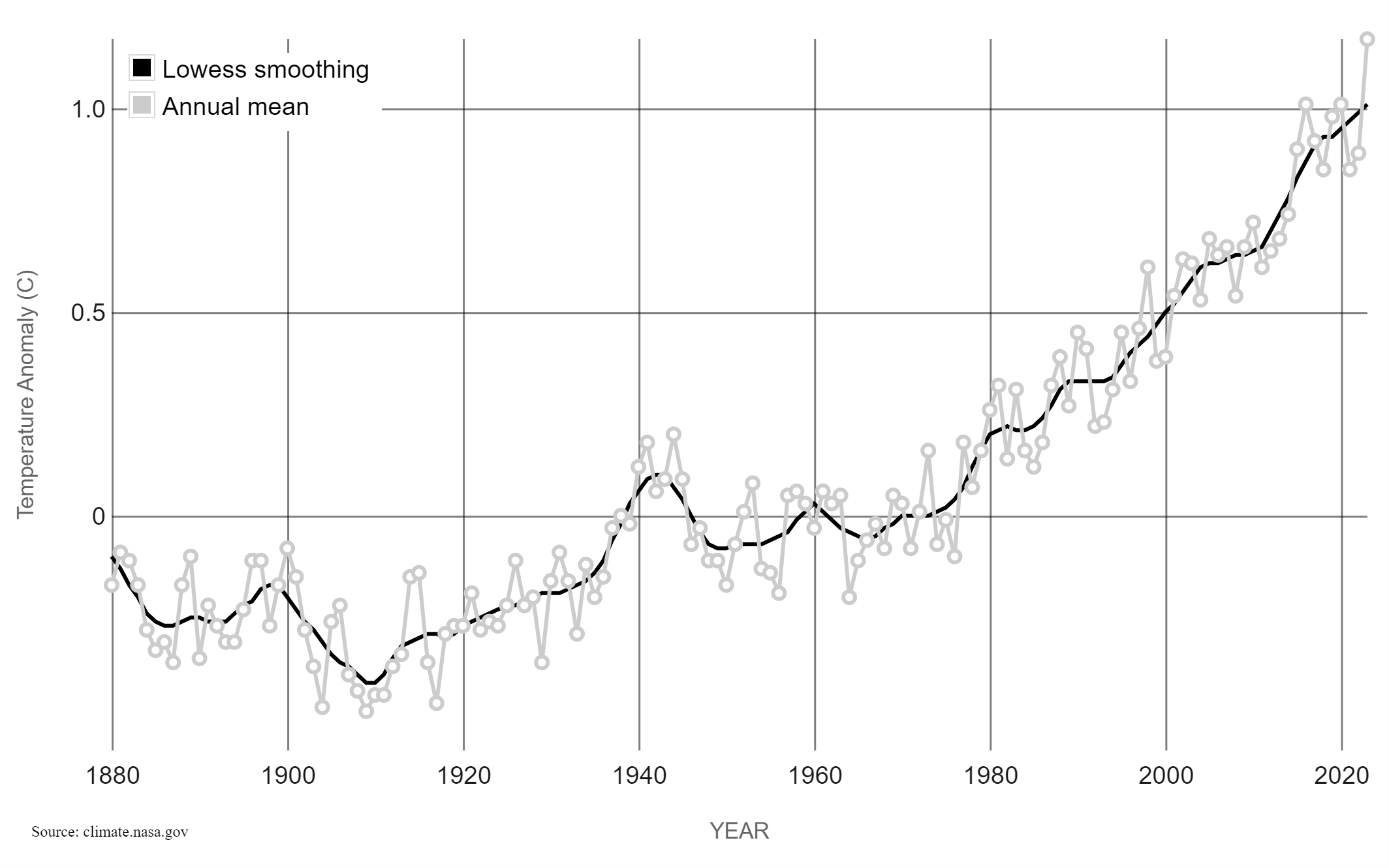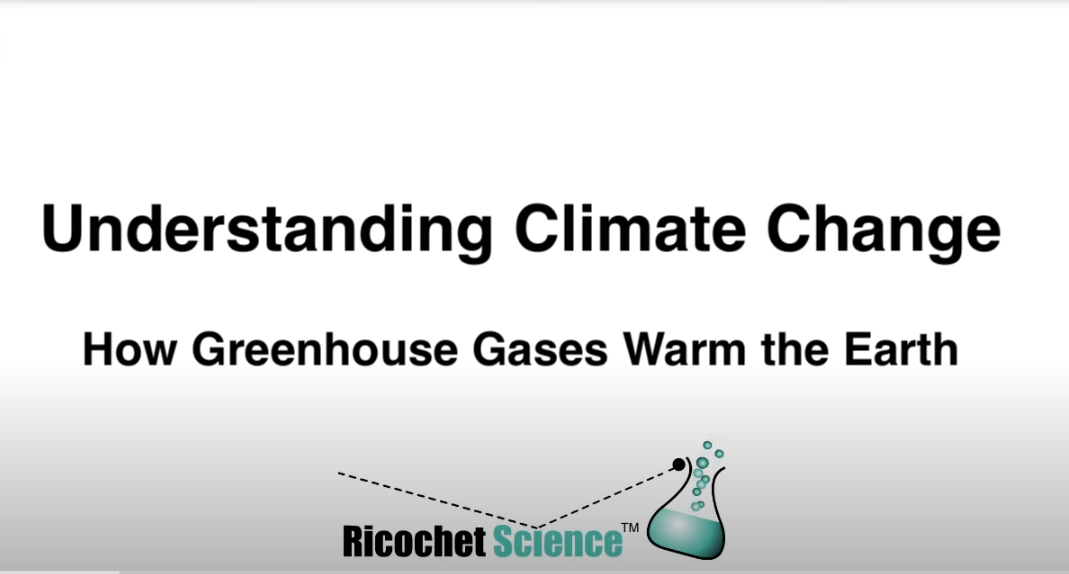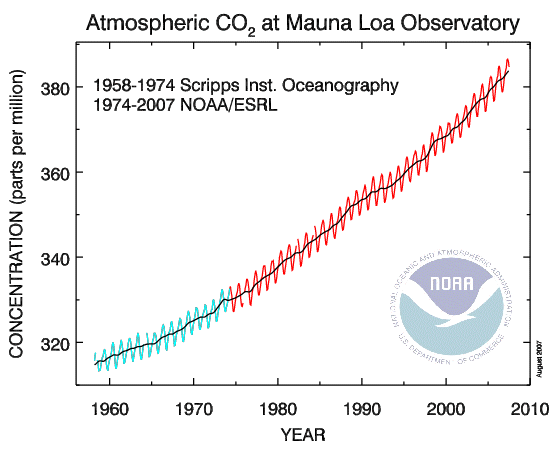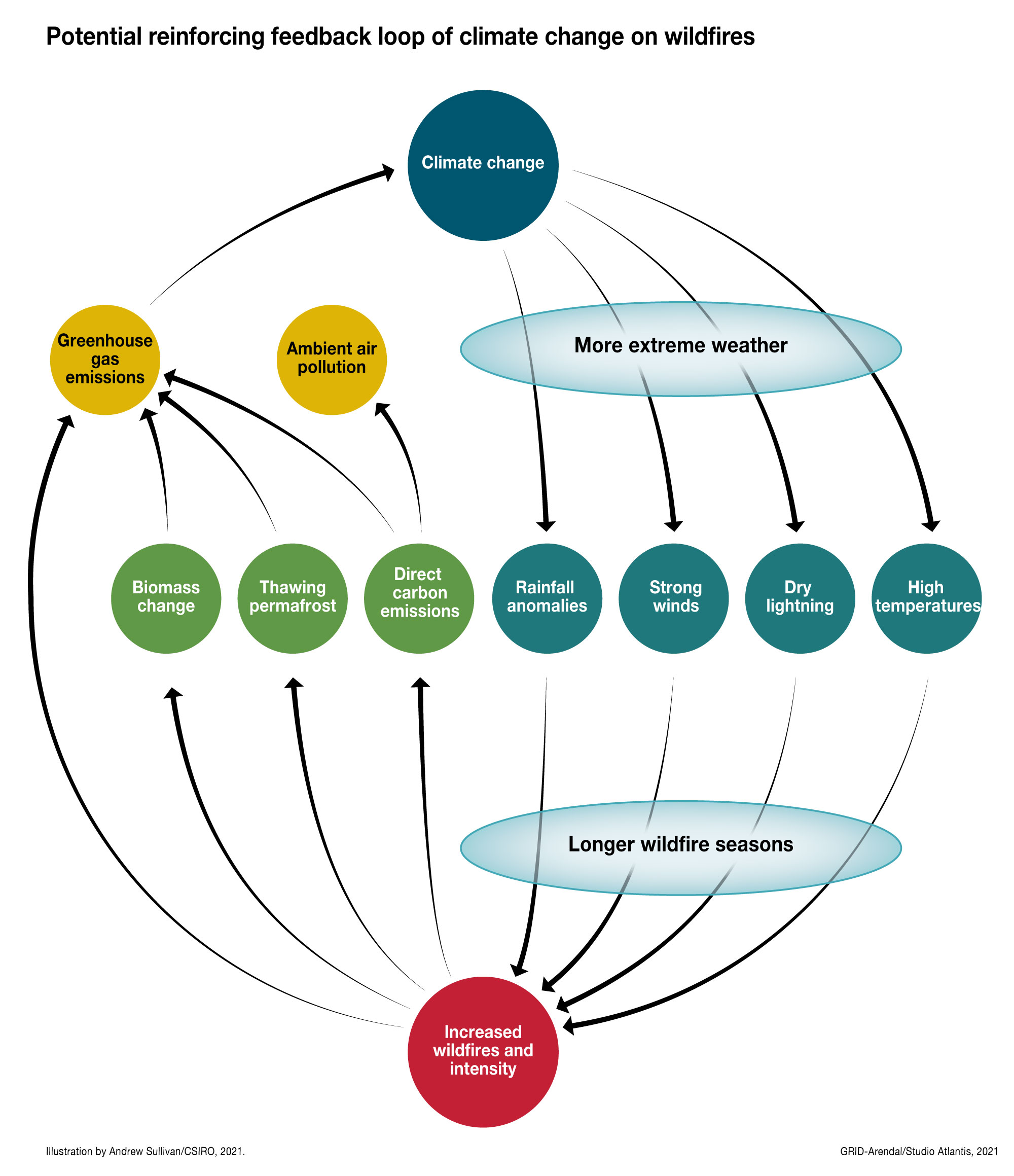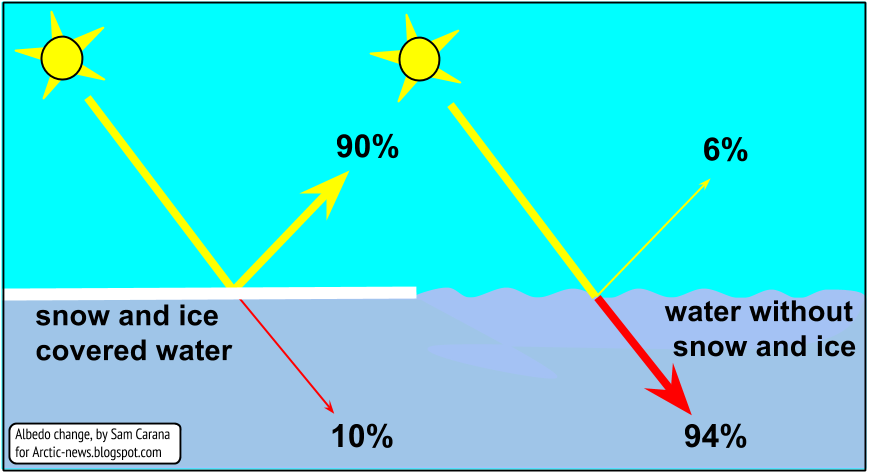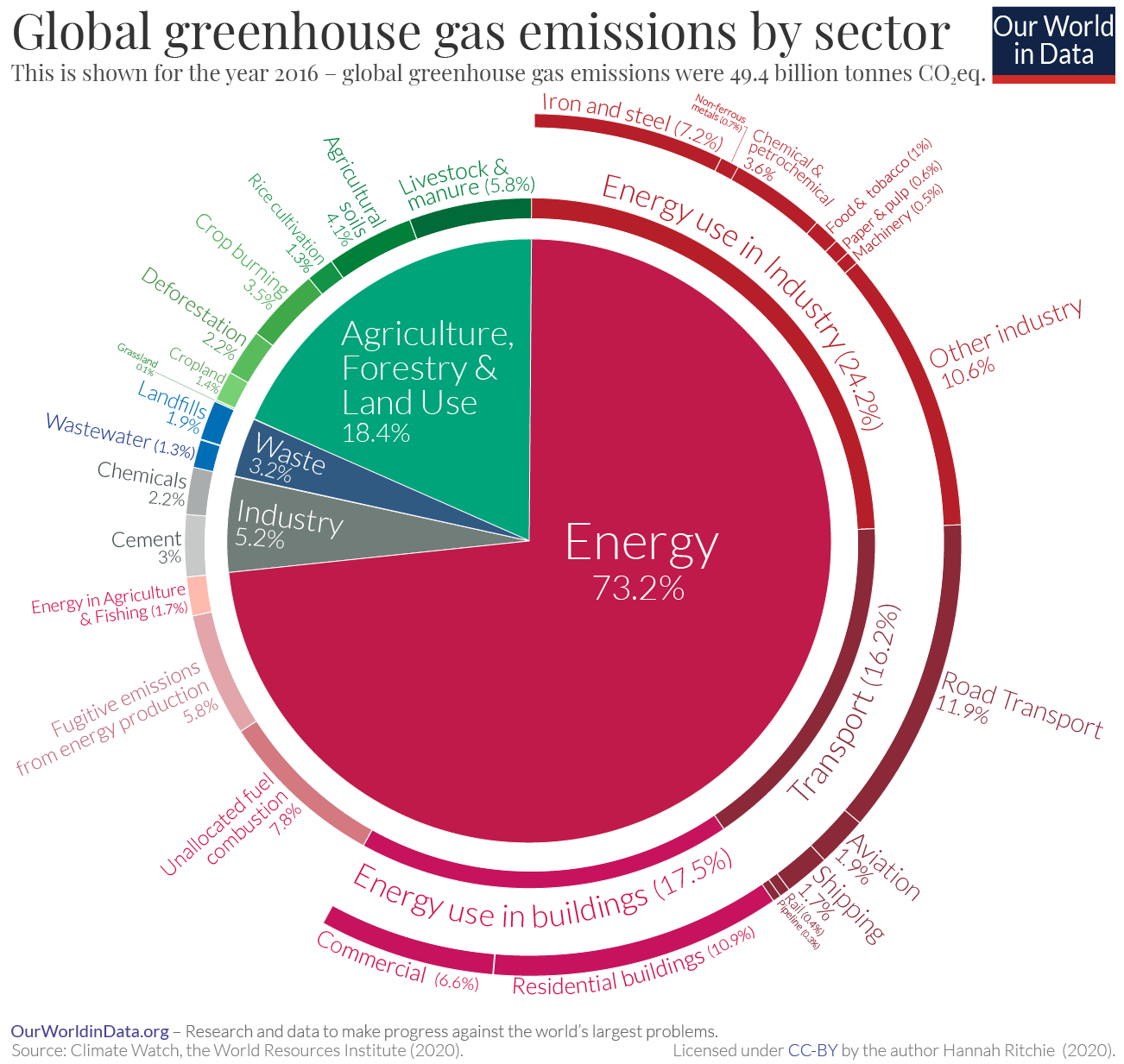Introduction to Sustainability and Climate Change
by CICan and Red Deer Polytechnic
SUSTAINABILITY AND CLIMATE CHANGE
A Summary to Promote General Literacy
CONTENTS
Sustainability
Climate Change
Greenhouse Gas Emissions
Protocols and Regulations
Greenhouse Gas Accounting
Lifecycle Assessment
Circular Economy
Additional Resources
Definitions – a Glossary of Terms
SUSTAINABILITY
Sustainability has been defined in variety of ways, but most commonly as “meeting the needs of the present without compromising the ability of future generations to meet their own needs.” (1987 United Nations Brundtland Commission). At the heart of this are the three pillars of social, economic, and environmental, where all three must be considered for true sustainability to be achieved. This requires a holistic approach to project planning where all costs and benefits must be analyzed, considering both direct and indirect impacts, as well as ongoing and cumulative effects within all three of these pillars.

When considering the 3 pillars of sustainability, we must always remember to calculate the true costs of a project to fully assess. For example, when we convert wetlands into housing, this may seem affordable and good for the social and economic pillars. However, without properly calculating the environmental loss of all of the natural resources and infrastructure the wetland provides, (e.g. clean air, water, soil filtration, pollinator habitat, biodiversity protection, flood mitigation, cooling in summer, heating in winter), what may first appear to be sustainable, later reveals itself to be unsustainable when the impacts from the loss of those “green” services are finally felt. If we are unable to grasp these concepts in our planning, then we or our children are going to live through the consequences and finally we will then be forced to understand that building in wetlands, is not actually sustainable.
The changes in climate that we are experiencing now, are the downstream effects of the industrial revolution and on-going use of fossil fuels and other carbon-intense activities from the distant and not-so-distant past. Our current economic model is based on continuous growth which is incompatible with a finite world. And while at the offset, it may seem affordable, however, as time progresses and climate change increases, ensuing weather events become more intense, forcing us to realize that affordable economic practices now have a very steep cost attached to them later.
In this summary, we will look at what is climate change so we can start to better understand how to live, work, and play in a truly sustainable way.
Learn more about true cost allocation here:
Here you can learn more about how forgetting to include all costs in a product can have a serious impact on overall sustainability – in this case the case study is food, here.
CLIMATE CHANGE
Introduction
Climate and weather are not the same, but they are related – learn more here: https://basinclimatesource.ca/climate-science
Climate change is defined as a change in weather over an extended period of time. It is a completely natural process, and over time, the planet has experienced multiple ice ages and warming periods, including the one we live in today.
The difference over the last 100 years or so is the speed at which this warming is occurring. The flora and fauna that call this planet home cannot adapt fast enough to the environmental changes resulting from this rapid rise in temperature.
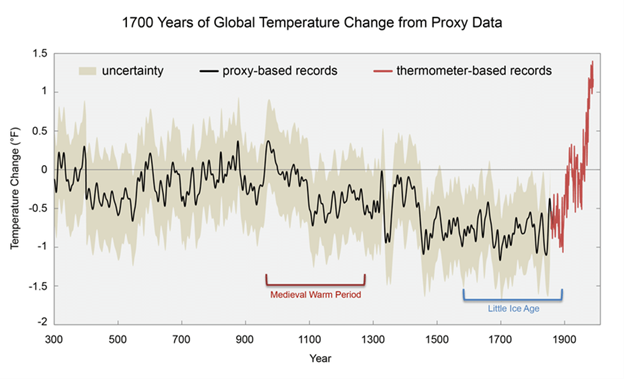
The main cause of this rapid rise in global temperatures is the release of greenhouse gas emissions through human activities, predominantly burning of fossil fuels, deforestation, and animal agriculture. To distinguish between the natural process and human process, the term anthropogenic climate change is sometimes used. Generally, when we speak of climate change, we are speaking of anthropogenic climate change.
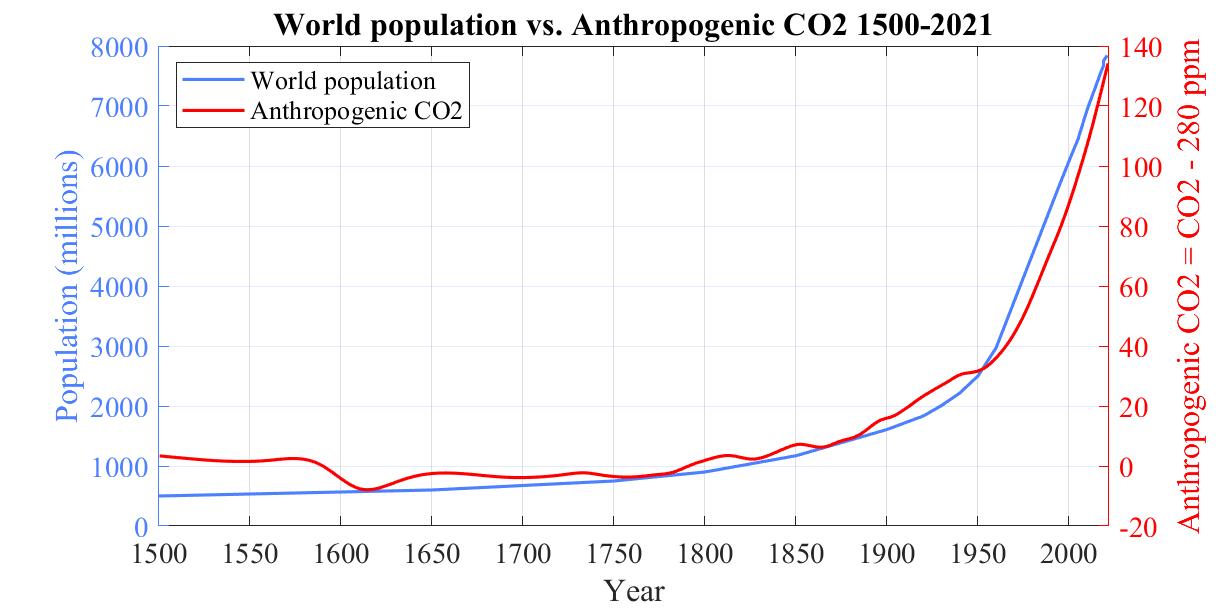
When greenhouse gases are released into the atmosphere they contribute to the greenhouse effect. The greenhouse effect is the heating of the planet’s surface due to the absorption of outgoing infrared radiation from greenhouse gases such as methane, carbon dioxide, and water vapour. This is a natural process, and is in fact a vital component of an inhabitable Earth as it keeps the surface at a livable temperature, without which the Earth would have an average temperature of about -18°C (the average temperature is currently +15°C).
Greenhouse gases include methane, nitrous oxide, refrigerants, and of course carbon dioxide.
When it comes to the effects that greenhouse gases have on the climate, we refer to them in carbon dioxide equivalents. Where 1 tonne of methane, for example, is equal to 25 tonnes of CO2 equivalent (25 t CO2e); or put another way, methane is 25 times more potent in its Global Warming Potential (GWP) than carbon dioxide. It is also common language to speak of greenhouse gases just as ‘carbon’; this is meant in reference to carbon dioxide and carbon dioxide equivalents.
Suggested video: Understanding Climate Change – How Greenhouse Gases Warm the Earth

CO2e and Atmospheric Makeup
CO2e can also be measured in their atmospheric makeup in parts per million (ppm). So when we talk about 350ppm as the ideal CO2e content – we are referring to how much CO2e should be in the atmosphere in relation to the other gases.
Currently we are at 420ppm CO2, we need to get back down to 350ppm CO2.
The Effects of Climate Change
The accelerated rate of climate change is disrupting the usual balance of nature, causing several issues around the globe. These include hotter temperatures, more severe storms, increased droughts, a warming and rising ocean, glacial melt, loss of species, declining food crops, increased health risks, poverty, displacement, and ensuing resource conflicts. Many of these impacts are interrelated. Some impacts are still unforeseen.
Suggested Links:
https://climate.nasa.gov/effects/
https://www.climate.gov/maps-data
Another way to review and understand climate impacts is through storytelling and mapping. When we combine our understanding of natural cycles through Indigenous Knowledges and community- based research, along with climate data, we have a fulsome, Etuaptmumk or 2-Eyed Seeing Approach. Visit the Climate Atlas to better understand this perspective and see the way our world is changing and what we can do about it: https://climateatlas.ca/
Modelling Climate Data
Scientists use climate modelling to try to predict how anthropogenic activity will result in greenhouse gas emissions, and what those impacts are in terms of temperatures and sea level rising. Those models further inform additional modelling, such as weather events, water levels, throughout the entire hydrological cycle, impacts on viruses, bacteria, and parasites, as well as potential predictions of financial loss and climate casualties and refugees.
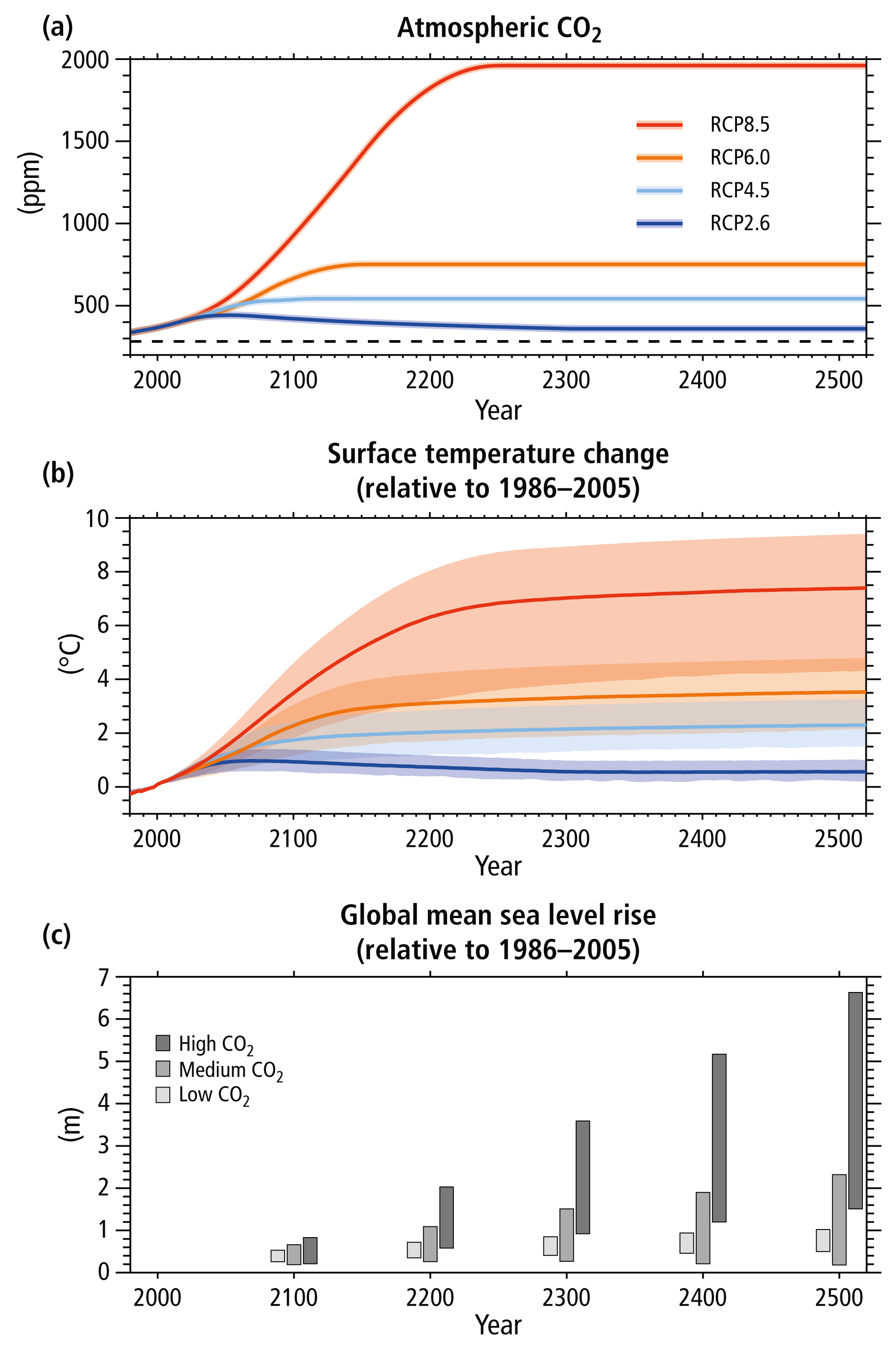
Again, combining this data with Indigenous Knowledges and community-based research, we can get a full picture of impacts on our atmosphere, our planet, our ecosystems, our communities, and on ourselves.
Positive Feedback Loops
Climate change has been even further accelerated by resulting Positive Feedback Loops. While these sound like they would be a good thing, it refers to the fact that the impact increases over time – moving more and more along the positive scale. One example of a simple positive climate feedback loop is as CO2e increases and water cycles are disrupted, less moderate rainfalls may occur, which means that forests can get drier, resulting in an increase in forest fires, which results in more CO2e entering the atmosphere as trees, plants, and topsoil burns.
Positive feedback loops are not always easy to predict which is why sometimes climate modelling cannot be so easy to predict – all of the variables may remain unforeseen. However, the general consensus is the above modelling is generally correct.
Another positive feedback loop that is concerning is the decreasing Albedo Effect of our planet as more ice melts. The Albedo Effect is the earth’s capacity to reflect heat/ solar radiation back into space. Our ice caps, glaciers and frozen surfaces make up the planet’s ability to perform the Albedo effect. With warming temperatures, more ice melts, reducing the Earth’s Albedo Effect, further trapping more solar radiation in the atmosphere, increasing temperatures, resulting in further ice melt.
With all of these complicated exchanges of gases and heat, it’s important for us to keep track of how much CO2e we are putting into the atmosphere in order to make sure we are not going out of our desired CO2 ppm range and furthermore avoid a detrimental path forward.
Emission Sources
The below graphic shows a breakdown of emission sources by sector. Nearly three quarters of emissions come from energy used for buildings, transportation and industry.
The breakdown of emissions in Canada shows similar values.
Breakdown of Canada’s greenhouse gas emissions by economic sector (2020)
 This helps to provide an indication of where greenhouse gas reduction strategies can be targeted and what their relative impact may be. For example, by improving the efficiency of buildings, the building trades can affect 13% of Canada’s greenhouse gas (GHG) emissions, and also have an impact on the supply of electricity, which is an additional 8%. By building smarter, we can influence a fifth of our total emissions. Similarly, land use change is a major driver of climate change, and by improved landscaping approaches, we could significantly reduce how much emissions are potentially released during land conversion or reduce current atmospheric emissions through greater natural carbon sequestration.
This helps to provide an indication of where greenhouse gas reduction strategies can be targeted and what their relative impact may be. For example, by improving the efficiency of buildings, the building trades can affect 13% of Canada’s greenhouse gas (GHG) emissions, and also have an impact on the supply of electricity, which is an additional 8%. By building smarter, we can influence a fifth of our total emissions. Similarly, land use change is a major driver of climate change, and by improved landscaping approaches, we could significantly reduce how much emissions are potentially released during land conversion or reduce current atmospheric emissions through greater natural carbon sequestration.
To learn more about the building trades and sustainability, please refer to the ensuing modules on greening the trades.
Emissions Reductions
Emissions can be reduced at the source, as discussed earlier through choices in energy sources. Or emissions can be sequestered through carbon stores. Lands conversion is a significant source of GHG emissions but so can on-going maintenance of lands such as lawncare. It’s important to seek out opportunities to reduce emissions at the outset of an activity (e.g. before cutting down trees or filling in wetlands to create a parcel on which to build), as well as the on-going maintenance of the property (e.g. regular cutting of grass, use of gas-powered lawn mowers, applying fertilizers, pesticides – all activities which emit GHGs).
There are GHGs associated with so many of our human activities, such as using a plastic bag, driving to the store, cutting the grass, eating a burger, buying a shirt, it’s important to assess where our opportunities for reducing our personal and professional GHG emissions are.
Protocols and Regulations
International agreements to reduce and address greenhouse gas emissions and coordinate their reduction on a global level first came into play through the 1997 Kyoto Protocol – a global pact that when signed by a country becomes binding, and that country must create legislation, funding opportunities, partnerships, oversight and other legal, financial, mercantile, social, and government mechanisms by which to support the agreed limits of CO2, temperature changes, and responsibility of emissions reductions according to country and emission-production. The latest version, the Paris Agreement, an evolution of the Kyoto Protocol, was adopted in 2015.
One thing of note, the Paris Agreement outlines how Indigenous people’s resiliency, creativity, stewardship, and general rights should be protected and upheld as vital, integral components of climate change mitigation and GHG reductions. Their ways of knowing and doing are also integral to climate change adaptation.
This video by climate expert and activist Ariel Tchekwie Deranger highlights the need to respect and honour Truth and Reconciliation not just because it’s the only way to a just society, but because our collective survival depends on it. https://www.youtube.com/watch?v=5Fn45EUAG4A
Resources: https://www.edf.org/sites/default/files/textreferences_ips_adopted_paris_agreement.pdf
Greenhouse Gas Accounting
Greenhouse gas accounting quantifies the amount of greenhouse gases produced by an organization, building, or operation over the course of a year – we cannot effectively reduce our greenhouse gases until we know how much we need to and the sources of those emissions. Thanks to the Paris Agreement, it’s everyone’s responsibility to take ownership and inventory of their own greenhouse gas emissions. The resulting total is known as a greenhouse gas inventory or carbon footprint (recall greenhouse gas and carbon are often used interchangeably). A GHG inventory allows an entity to first understand where its emissions are coming from, and then be able to target reduction strategies that may have the largest impact.
To conduct a GHG inventory, boundaries must be set to determine the extent of influence you are interested in measuring. In the GHG accounting world, these are broken down into three scopes. Scope 1 emissions are direct emissions that include onsite combustion (i.e. natural gas in boilers) and fleet vehicles. Scope 2 emissions are indirect emissions that result from the production and distribution of electricity then used within the measured boundaries. Scope 3 emissions are indirect upstream and downstream sources of emissions that include the transport and distribution of products, business travel, waste management, and the end use of products.
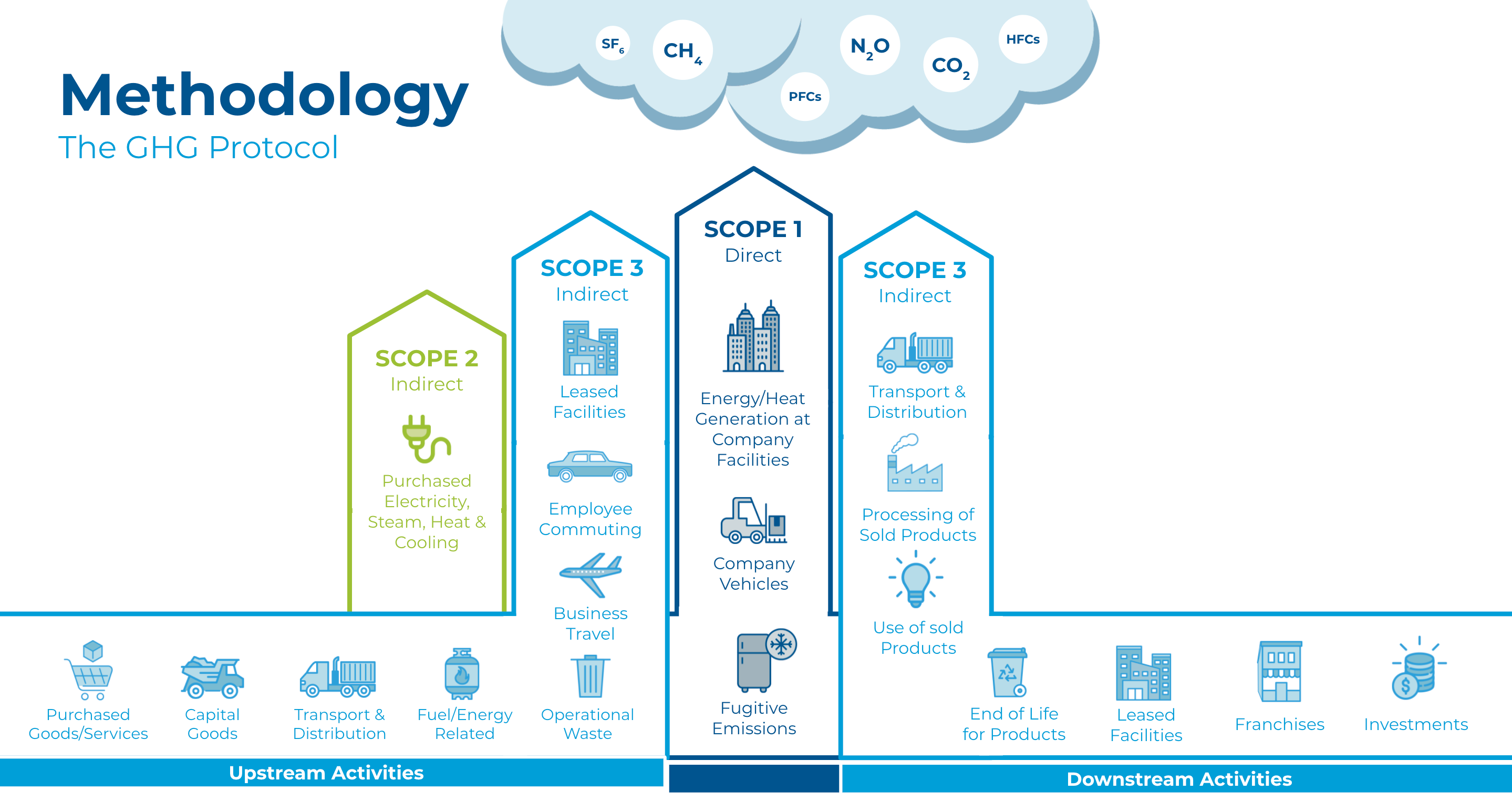
Generally, GHG inventories take into account Scopes 1 and 2 as these are where an entity can have the greatest influence over these emissions. For example, Scope 1 emissions can be reduced with more efficient heating systems and/or reducing thermostat set points and Scope 2 emissions can be reduced through more efficient lighting or appliances.
References:
ISO 14064-1:2018 provides the standard for quantifying and reporting GHG emissions at the organizational level. https://www.iso.org/standard/66453.html
ISO 14064-2:2019 provides the standard for quantifying and reporting activities designed to reduce GHG emissions. https://www.iso.org/standard/66454.html
The GHG Protocol provides the standard for quantifying and reporting GHG emissions at the corporate level. It is more commonly becoming the Canadian standard for GHG accounting. https://ghgprotocol.org/
To illustrate an example, consider a house. The two main sources of GHGs are through the consumption of electricity and natural gas.

To calculate the amount of GHGs emitted, the usage is multiplied by what is called an emissions factor (EF). These can be found in Canada’s National Inventory Report. Particular attention needs to be paid to the electricity EF as this varies significantly between provinces. Year to year fluctuations can also be significant as the energy mix of the electrical grid changes.
Net Zero
The concept of net zero is in reference to greenhouse gas emissions and there are a few different types: net zero energy, net zero carbon, and zero carbon.
Net zero energy means the electricity used by a site is also generated on site. In this case the entity can continue to use fossil fuels for space heating, such as in boilers.
To achieve net-zero carbon the systems that use fossil fuels need to either be converted to use electricity from renewables either on- or off-site, or balanced through the purchase of carbon offsets. This is also referred to as carbon neutrality.
Zero-carbon means there are indeed zero emissions being produced by the entity either on- or off-site. Terms such as true carbon zero and real zero mean the same thing.
Finally, carbon positive means an entity actually removes additional carbon, overtop of achieving net zero, from the atmosphere. Oddly, carbon negative actually means the same thing.
Life-Cycle Assessment
A Life-Cycle Assessment is a methodology that assesses the total environmental impacts associated with all the stages of a product, process, or service. This includes impacts beyond the release of greenhouse gases, such as geological impacts of mining (ex. displacement), resource depletion, waterborne waste, solid waste, acidification, eutrophication, radiation, and ecotoxicity.
Conducting an LCA allows for a better understanding of total impacts of a product or service, and knowing this information also allows for more informed decision-making. This information can allow a company to select a product with minimal environmental impacts, one with a focus on certain environmental indicators that align with their corporate priorities, or ones that help meet certain Environmental, Social, and Governance (ESG) targets.
The main LCA models are Cradle-to-Grave and Cradle-to-Cradle.
In the cradle-to-grave approach, the boundaries of assessment start at the raw material extraction of a product and end at disposal. Cradle-to-cradle follows a similar path, but includes other methods of disposal including recycling and remanufacturing of some, or all, of the original product.
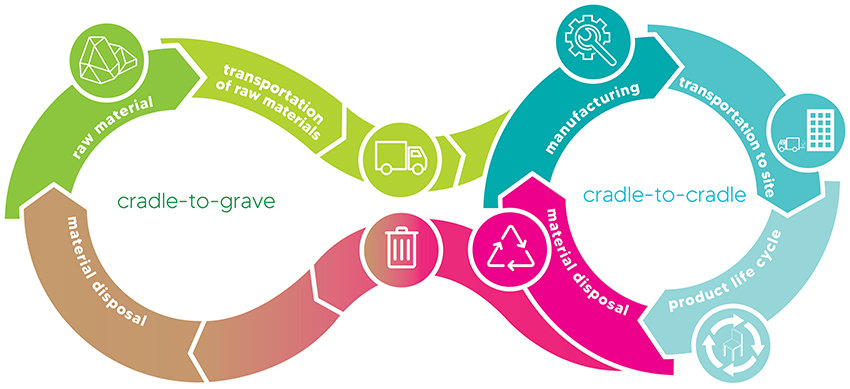
Circular Economy
The concept of a circular economy is an economy in which waste does not exist. The term is sometimes used interchangeably with cradle-to-cradle. In this economic model, products are designed to be used longer, re-used, or reimagined before being recycled. Any remaining components are treated in some manner to prevent them from reaching landfill, for example as a source of energy in an incinerator.
This concept is in contrast to our current linear model of take-make-waste, where we continuously take raw materials to produce products, use them until we’re done with them, and throw them away. Other factors that contribute to this model are a limited ability to fix things, items are created to break to encourage society to keep buying, items like small appliances are often cheaper to buy new rather than fix a component, and technology fads encourage people to throw away an old model just because there is a new one out.
The benefits of moving toward a circular economy are numerous and widespread. Reducing raw material extraction has obvious natural conservation benefits, but also reduces the energy, and emissions, associated with the material extraction and processing, and can eliminate labour exploitation along the supply chain (e.g. slave labour associated with resource extraction or sweatshops in the manufacturing process). The ingenuity required to reimagine our economy will create jobs and open opportunities for new industries such as improved recycling processes or alternative resource extraction (e.g. Vandadium from oil tailings ponds). And being able to purchase and maintain goods for longer will lead to economic savings for all end users.
(https://unctad.org/topic/trade-and-environment/circular-economy)
Suggested videos:
Read more:
Now you understand the basics of climate change, what causes it, the complexities that further contribute to it, and the various social/ economic/ environmental pillars that we have at our disposal to try to address it.
Resources to learn more about climate change in general:
- https://climate.nasa.gov/ – NASA has one of the most comprehensive databases and objective/ scientific platforms providing information on climate change, data, metrics, mitigation, impacts, and solutions.
- https://www.ipcc.ch/ – home of the Intergovernmental Panel on Climate Change, the IPCC provides a platform for global scientists to share their findings in reports, data, graphs, and other resources, as well as provides information on what governments are doing to address the issues.
- Power to the People – a television documentary series that explores the renewable energy revolution empowering Indigenous communities across Canada and around the world: http://powertothepeople.tv
- www.waterbear.com – free streaming service without ads where you can watch award-winning documentaries and series dedicated to the future of our planet.

